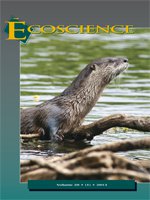Interactions between ants and vertebrate-dispersed fleshy fruits are common on the floor of tropical forests. These interactions are considered beneficial to seeds if ants clean the seed (which may prevent fungal contamination and/or increase germination success) or act as secondary fine-scale dispersers (depositing the seed in nearby nutrient-enriched nest sites). Benefits to seeds, however, may be constrained by limited ant access to fruits. Here, we experimentally tested whether ant access to fallen fleshy fruits of Psychotria suterella (Rubiaceae) can be affected by previous handling (including ingestion) by birds. We found that mandibulated fruits and fruits embedded in feces are more prone to be visited by ants compared to entirely intact fruits. Moreover, the number of ant species per station was higher for vertebrate-handled fruit categories. We suggest that ongoing vertebrate loss in tropical forests may affect this highly opportunistic and potentially mutualistic interaction.
How to translate text using browser tools
1 March 2013
Attractiveness of Fallen Fleshy Fruits to Ants Depends on Previous Handling by Frugivores
Ana Gabriela D. Bieber,
Paulo S. D. Silva,
Paulo S. Oliveira
ACCESS THE FULL ARTICLE

Ecoscience
Vol. 20 • No. 1
March 2013
Vol. 20 • No. 1
March 2013
ant—seed interaction
Atlantic forest
dispersion de graines
Forêt Atlantique
frugivorie
frugivory
interaction graine-fourmi




